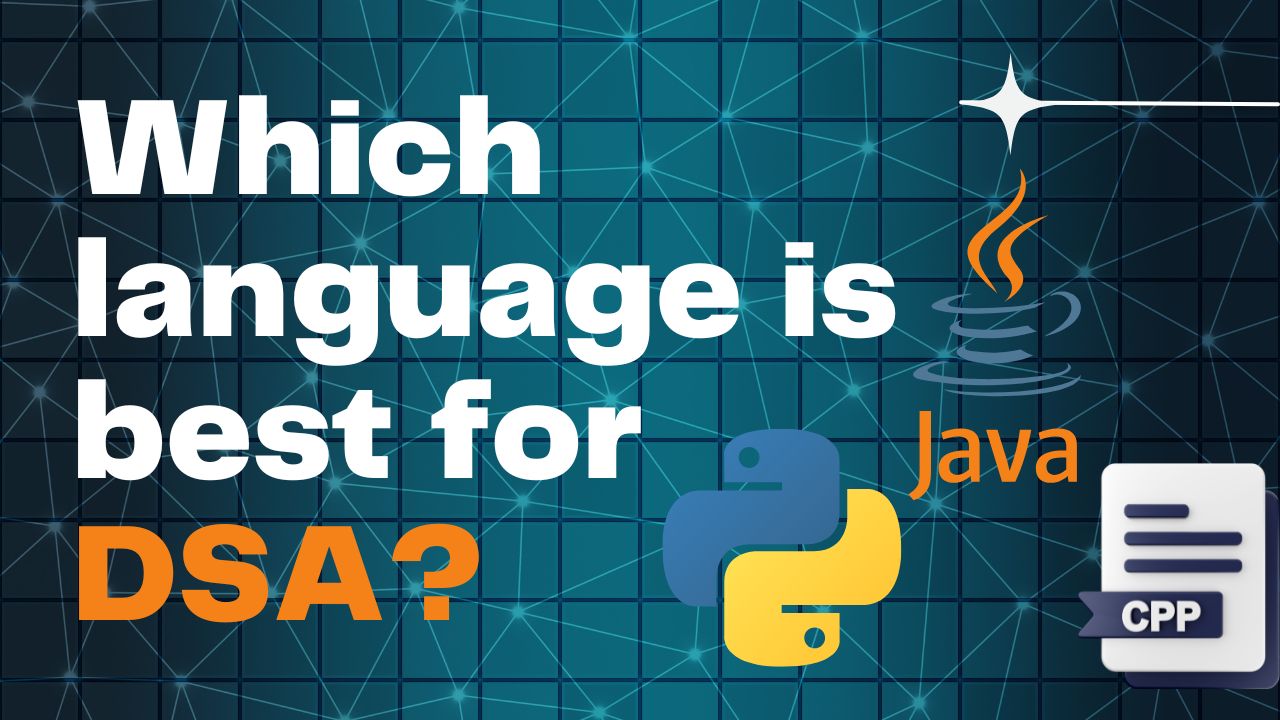Which language is best for DSA? : For aspiring programmers and computer science students, conquering Data Structures and Algorithms (DSA) is a crucial step. But before you dive into complex algorithms and intricate data structures, a critical decision awaits: choosing the right programming language.
Table of Contents
There isn’t a single “best” language for DSA. Each option offers its own strengths and weaknesses, making the ideal choice depend on your background and goals. Let’s explore some popular contenders and see which language is best for DSA?
So, Which Language Should You Choose?
Here’s a quick guide:
- For Beginners: If you’re new to programming, Python‘s gentle learning curve makes it a fantastic starting point.
- For Performance-Oriented Programmers: If speed and efficiency are paramount, C++ is your champion. However, be prepared to invest time mastering its intricacies.
- For Well-Rounded Programmers: Java offers a balanced approach, combining readability with good performance and a robust library.
Remember, the most important factor is to choose a language you’re comfortable with and enjoy learning. Proficiency in DSA concepts is far more valuable than blind adherence to a specific language.
Which language is best for DSA?
Let’s took a overview:
1. C++: For Performance-Oriented Programmers
- Pros:
- Blazing fast execution speed, perfect for resource-intensive DSA applications.
- Extensive Standard Template Library (STL) provides pre-built data structures and algorithms, saving you development time.
- Granular memory control allows for fine-tuning performance.
- Cons:
- Complex syntax with a steeper learning curve, especially for beginners.
- Manual memory management can be tricky, leading to potential memory leaks and bugs if not handled properly.
2. Java: For Well-Rounded Programmers
- Pros:
- Clear and readable syntax, making it easier to learn and understand compared to C++.
- Automatic garbage collection eliminates memory management headaches.
- Rich library of data structures and algorithms within its Collections Framework.
- “Write Once, Run Anywhere” philosophy ensures code portability across platforms.
- Cons:
- Can be slightly slower than C++ for highly optimized tasks.
3. Python: For Beginners
- Pros:
- Incredibly easy to learn with a concise and intuitive syntax.
- Extensive libraries like NumPy and SciPy cater to scientific computing and data analysis, which can complement DSA learning.
- Cons:
- Not as fast as C++ or Java, especially for complex algorithms.
- Might not be the preferred choice for performance-critical applications.
Here are some additional tips:
- If you’re targeting a particular company or industry, research their preferred languages for DSA.
- Don’t be afraid to experiment! Learning the fundamentals in one language can make it easier to pick up another later.
With the right weapon in hand, you’ll be well on your way to conquering the world of DSA!
Conclusion – Which language is best for DSA?
In summary, the best programming language for Data Structures and Algorithms (DSA) hinges on individual needs and goals. Python offers a gentle learning curve ideal for beginners, while C++ excels in speed and resource control, albeit with a steeper learning curve. Java strikes a balance between readability and performance. Regardless of language choice, mastering DSA fundamentals is paramount, as it lays a solid foundation for problem-solving in any language. Consider industry preferences and personal interests when making your decision, and don’t hesitate to explore and experiment with different languages. Ultimately, proficiency in DSA concepts transcends language barriers and equips programmers with the tools to tackle complex challenges in their programming journey.
Frequently Asked Questions – Which language is best for DSA?
1.Which programming language is best for learning Data Structures and Algorithms (DSA)?
Answer: The best language depends on your preferences and goals. Python is great for beginners due to its simplicity, while C++ offers high performance but has a steeper learning curve. Java strikes a balance between readability and performance.
2.Is it necessary to learn multiple programming languages for DSA?
Answer: It’s not necessary, but it can be beneficial. Proficiency in DSA concepts transcends language boundaries. However, exploring different languages can offer insights into diverse approaches and enhance problem-solving skills.
3.How important is it to prioritize performance in DSA applications?
Answer: Performance is crucial for some applications but less critical for learning DSA concepts. While languages like C++ prioritize speed, beginners might benefit more from focusing on understanding algorithms and data structures, rather than optimizing for performance.
4.Are there specific industries or companies that prefer certain programming languages for DSA?
Answer: Yes, some industries and companies have preferences for certain languages based on their tech stack or historical usage. Researching industry trends and job requirements can help tailor your language choice to specific career goals.
5.How do I decide which language to choose for learning DSA?
Answer: Consider factors such as your familiarity with the language, your comfort level, and the resources available for learning. Choose a language that aligns with your learning style and long-term career objectives. Experimentation and exploration of different languages can also provide valuable insights.
